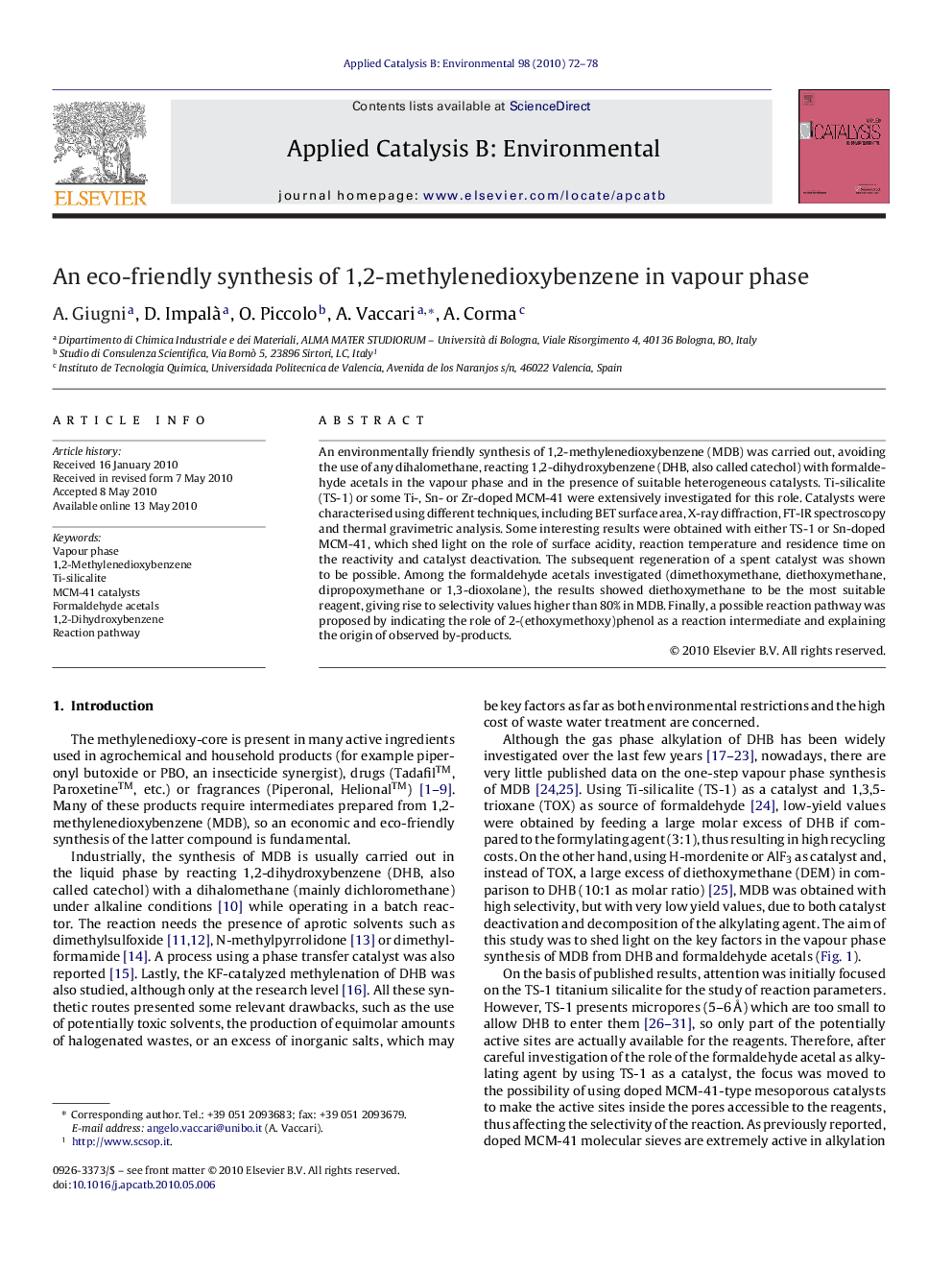| Article ID | Journal | Published Year | Pages | File Type |
|---|---|---|---|---|
| 47334 | Applied Catalysis B: Environmental | 2010 | 7 Pages |
An environmentally friendly synthesis of 1,2-methylenedioxybenzene (MDB) was carried out, avoiding the use of any dihalomethane, reacting 1,2-dihydroxybenzene (DHB, also called catechol) with formaldehyde acetals in the vapour phase and in the presence of suitable heterogeneous catalysts. Ti-silicalite (TS-1) or some Ti-, Sn- or Zr-doped MCM-41 were extensively investigated for this role. Catalysts were characterised using different techniques, including BET surface area, X-ray diffraction, FT-IR spectroscopy and thermal gravimetric analysis. Some interesting results were obtained with either TS-1 or Sn-doped MCM-41, which shed light on the role of surface acidity, reaction temperature and residence time on the reactivity and catalyst deactivation. The subsequent regeneration of a spent catalyst was shown to be possible. Among the formaldehyde acetals investigated (dimethoxymethane, diethoxymethane, dipropoxymethane or 1,3-dioxolane), the results showed diethoxymethane to be the most suitable reagent, giving rise to selectivity values higher than 80% in MDB. Finally, a possible reaction pathway was proposed by indicating the role of 2-(ethoxymethoxy)phenol as a reaction intermediate and explaining the origin of observed by-products.
Graphical abstractFigure optionsDownload full-size imageDownload as PowerPoint slide
